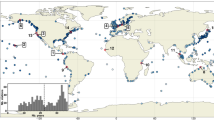Abstract
A typhoon is an extreme weather event that can cause huge loss of life and economic damage in coastal areas and beyond. As a consequence, the search for more accurate predictive models of typhoon formation; and, intensity have become imperative as meteorologists, governments, and other agencies seek to mitigate the impact of these catastrophic events. While work in this field has progressed diligently, this paper argues, that the existing models are deficient. Traditional numerical forecast models based on fluid mechanics have difficulty in predicting the intensity of typhoons. Forecasts based on statistics and machine learning fail to take into account the spatial and temporal relationships among typhoon formation variables leading to weaknesses in the predictive power of this model. Therefore, we propose a hybrid model, which we argue, can produce a more realist and accurate account of typhoon ‘behavior’ as it focuses on both the spatio-temporal correlations of atmospheric and oceanographic variables. Our CNN-LSTM model introduces 3D convolutional neural networks (3DCNN) and 2D convolutional neural networks (2DCNN) as a method to better understand the spatial relationships of the features of typhoon formation. We also use LSTM to examine the temporal sequence of relations in typhoon progression. Extensive experiments based on three datasets show that our hybrid CNN-LSTM model is superior to existing methods, including numerical forecast models used by many official organizations; and, statistical forecast and machine learning based methods.











Similar content being viewed by others
References
Peng MS, et al (2012) Developing versus nondeveloping disturbances for tropical cyclone formation. Part I: North Atlantic. Mon Weather Rev 140.4:1047–1066
Fu B, et al (2012) Developing versus nondeveloping disturbances for tropical cyclone formation. Part II: Western North Pacific. Mon Weather Rev 140(4):1067–1080
Hennon CC (2017) Forecasting tropical cyclogenesis over the atlantic basin using Large-Scale data. Monthly weather review. 1–14
Kerns BW, Chen SS (2013) Cloud Clusters and tropical cyclogenesis: Developing and nondeveloping systems and their Large-Scale environment. Mon Weather Rev 141 (1):192–210
Xingjian S, et al (2015) Convolutional LSTM network: A machine learning approach for precipitation nowcasting. 802–810
Yang Y, et al (2018) A CFCC-LSTM model for sea surface temperature prediction. IEEE Geosci Remote Sens Lett 15(2):207–211
Donahue J, et al (2015) Long-term recurrent convolutional networks for visual recognition and description. 2625–2634
Zhang L, et al (2017) Learning Spatiotemporal Features Using 3DCNN and Convolutional LSTM for Gesture Recognition. 3120–3128
Qu Q, Liu S, Zhu F, Jensen CS (2016) Efficient online summarization of Large-Scale dynamic networks. IEEE Trans Knowl Data Eng 28(12):3231–3245
Liu S, Qu Q (2016) Dynamic collective routing using crowdsourcing data. Transp Res B Methodol 93:450–469
Liu S, Qu Q, Wang S (2018) Heterogeneous anomaly detection in social diffusion with discriminative feature discovery. Inf Sci 439-440:1–18
Liu S, Qu Q, Wang S (2015) Rationality analytics from trajectories. TKDD 10(1):10:1–10:22
CMA Verification on Forecasts of Tropical Cyclones over Western North Pacific (2012 ∼ 2016)
Chen P, Yu H, Chan JCL (2011) A Western North Pacific tropical cyclone intensity prediction scheme[J]. Acta meteorologica sinica 25(5):611–624
Franklin JL (2008) National Hurricane center forecast verification report. National Hurricane center Rep. (2012 ∼ 2016)
Song J, Wang Y, Chen P (2011) A statistical prediction scheme of tropical cyclone intensity over the western North Pacific based on the partial least square regression [J]. Acta Meteorol Sinica 69(5):745–756
Leiming M (2014) Research progress on China typhoon numerical prediction models and associated major techniques. Progress in Geophys.(in Chinese) 29(3):1013–1022DOI
Camargo SJ, et al (2007) Use of a genesis potential index to diagnose ENSO effects on tropical cyclone genesis. J Climate 20(19):4819–4834
Murakami H, Sugi M (2010) Effect of model resolution on tropical cyclone climate projections. Sola 6:73–76
Zhang M, et al (2016) A genesis potential index for Western North Pacific tropical cyclones by oceanic parameters. J Geophys Res Oceans 121(9):7176–7191
Chand SS, Walsh KJE (2011) Forecasting Tropical cyclone formation in the Fiji region: A Probit Regression Approach Using Bayesian Fitting. Weather Forecast 26(2):150–165
Su Y, et al (2018) A New Data Mining Model for Hurricane Intensity Prediction. 98–105
Wijnands JS, et al (2016) Variable selection for tropical cyclogenesis predictive modeling. Mon Weather Rev 144(12):4605–4619
Zhang W, et al (2015) Discriminating developing versus nondeveloping tropical disturbances in the Western North Pacific through decision tree analysis. Weather Forecast 30(2):446–454
Zhang W, et al (2013) The application of decision tree to intensity change classification of tropical cyclones in western North Pacific. Geophys Res Lett 40(9):1883–1887
LeCun Y, et al (1989) Backpropagation applied to handwritten zip code recognition. Neural Comput 1(4):541–551
LeCun Y, et al (1998) Gradient-based learning applied to document recognition. Proc IEEE 86(11):2278–2324
Hochreiter S, Schmidhuber J (1997) Long Short-term memory. Neural Comput 9(8):1735–1780
Kalchbrenner N, et al (2015) Grid long short-term memory. arXiv:1507.01526
Li Y, et al (2017) Leveraging LSTM for rapid intensifications prediction of tropical cyclones. IV-4/W2, 101–105
Qiu M, et al (2017) A Short-Term Rainfall Prediction Model using Multi-Task Convolutional Neural Networks. 395–404
Ji S, et al (2013) 3D convolutional neural networks for human action recognition. IEEE Trans Pattern Anal Mach Intell 35(1):221–231
Li Y, et al (2016) Large-scale gesture recognition with a fusion of rgb-d data based on the c3d model. 25–30
Tran D, et al (2015) Learning spatiotemporal features with 3d convolutional networks. 4489–4497
Zhou Z (2016) Machine Learning, Tsinghua University press
Schumacher AB, et al (2009) Objective estimation of the 24-h probability of tropical cyclone formation. Weather Forecast 24(2):456–471
Acknowledgements
This research is partially supported by the the National Key Research and Development Program of China (No. 2018YFC1406206) and National Natural Science Foundation of China (61802424, 61502516, 61472433, 41675097). The final amendation about the English expression is under the help of David Hughes.
Author information
Authors and Affiliations
Corresponding author
Additional information
Publisher’s note
Springer Nature remains neutral with regard to jurisdictional claims in published maps and institutional affiliations.
Rights and permissions
About this article
Cite this article
Chen, R., Wang, X., Zhang, W. et al. A hybrid CNN-LSTM model for typhoon formation forecasting. Geoinformatica 23, 375–396 (2019). https://doi.org/10.1007/s10707-019-00355-0
Received:
Revised:
Accepted:
Published:
Issue Date:
DOI: https://doi.org/10.1007/s10707-019-00355-0




